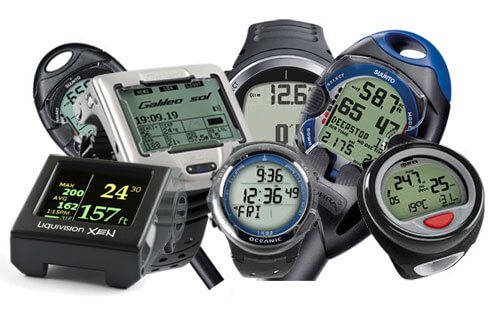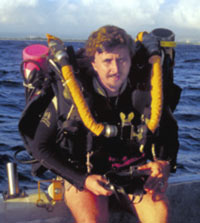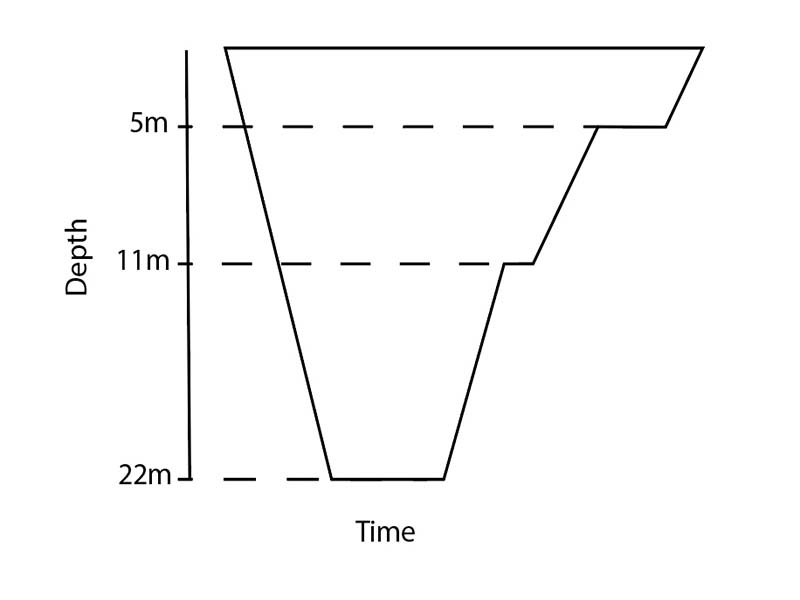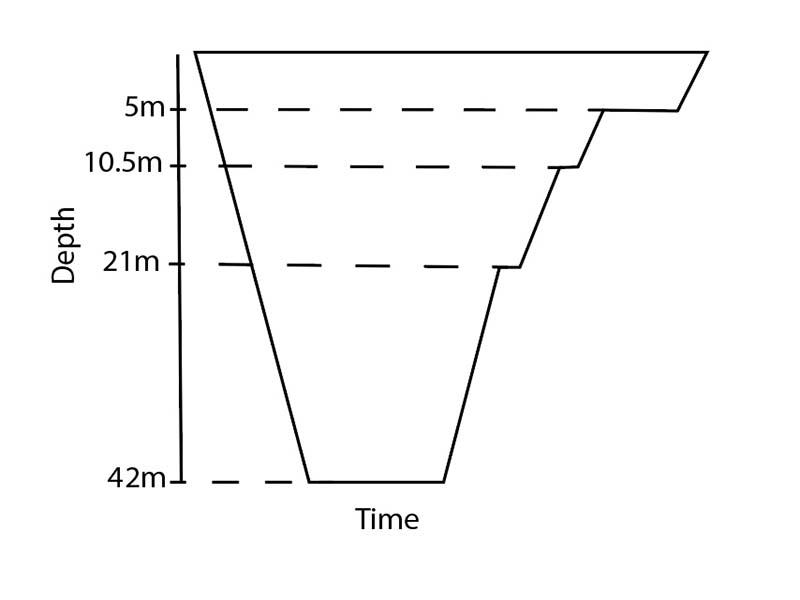To deep stop or not
Regular visitors or followers of Siren Diving social media know that we love diving. A drift diving along the North of Lembongan. A manta ray dive on the South coast of Penida. We’re never happier than when we are in underwater.
Enjoyment and safety are always our main concerns and so anything that can add to experience is welcome. As recreational diving becomes more popular, the cost of dive equipment drops. We notice more of our dive buddies having their own dive gear than ever before. Dive computers are certainly towards the top of that list. With the fashion conscious diver able to buy a wristwatch style computer that can be worn above and below water without looking like an extra from Star Trek.
Before your eyes glaze over at the prospect of reading some decompression theory, it’s really not that bad! This stuff affects your body every time you go diving. Surely it’s worth understanding it a little bit? Pay attention at the back, I’ll be asking questions later.
Good things in small packages
With all the features manufacturers now cram into such a small packages, instruction manuals have started to look like encyclopaedias. With more abbreviations than you can shake a snorkel at, we thought it would be nice to explain. Although dual gas and Nitrox are self explanatory, the deep stop preference seems to have slipped into a lot of units configuration. Some even have them enabled by default.

Demystifying the mysterious
So what are deep stops? Should you use them? and how do they work?
I can’t remember the first computer I bought that had the ‘new’ feature called Deep Stops on it. I do remember the dive community being rather split over the whether they were necessary or not. This is still the case, with some agencies recommending them and others saying we need more data. Manufacturers including Suunto, Cressi, Tusa and Mares all now have the function available on a range of their dive computers.
Before we get to the finer details, let’s make sure we understand the following:
- We are aiming to explain why and what your computer screen is showing during the ascent.
- We are only talking about non stop, recreational diving.
- All dive times should be well within recreational diving limits.
- We are NOT talking about technical diving, with planned decompression stops during the ascent. (Though it seems likely that the same theory holds true)
In other words, if your are dive techy, take a breath and calm yourself. We aren’t trying to redefine 100 years of decompression theory 😉
Deep stops in a single sentence
If you reduce the stresses on your body by allowing gas exchange in the tissues to take place gradually, you will feel less tired after a dive and reduce the chances of DCS.
Thats a good thing, right?
In the same way that some people feel they aren’t so tired after diving with Nitrox, theoretically, deep stops should have a similar effect. As an aside, I’m not sure I feel less tired with Nitrox but I certainly don’t feel any worse… I’ll put that down to getting old. 😀
Where did deep stops come from?
Listen to any post dive chatter and many divers will comment on how tired they are after doing a couple of dives in a day. It was this symptom that led Richard Pyle, (a true fish nerd and marine biologist), to look into it a little further to see if he could find a reason.
With most of his dives being below 50 meters (180 feet), he noticed that it was only some dives that he was feeling extra tired when surfacing. He realised that when he made an ascend after catching a specimen fish, he would stop few a few minutes, at about half the maximum depth. This would allow the fish swim bladders to equalise and so they would survive.
If he didn’t catch any specimens, then he didn’t need to stop and only performed the standard decompression or safety stop. It was these unsuccessful specimen dives that were leaving him feeling fatigued.

Dr Richard Pyle, Ph.D
(Photo credit : NOGI)
Testing the theory
Taking this information forward, he then started making ‘deep stops’ on all his dives whether successful or otherwise. He noticed that he wasn’t feeling so tired after the dives. Psychosomatic or not, he shared his experience with his diving buddies and the technical diving community started to integrate deep stops into part of their planning.
Applying the knowledge
As mentioned before, we are talking about non stop recreational diving. Let’s take a look at a couple of dives to show how this applies to us and what our computers tell us.
Dives above 20m
If you diving at the entry level of most agencies (Open Water), then you are limited to 18 meters and deep stops aren’t required. It is recommended that you perform a safety stop at 5 meters for 3 minutes in any case.
Dives below 20m
If you are diving to a depth of 20 meters (65 feet) or greater, then a deep stop for a minute or two at half the maximum depth is suggested. In this case 11 meters.

Dives below 40m
If you dive to 42 meters, then a first deep stop at 21 meters (half the depth) and a second at 10.5 meters (half the remaining depth) is suggested along with the 3 minutes at 5 meters.

It’s important to remember that these deep stop times must be built into your normal dive planning and aren’t meant to extend you bottom time or be used as decompression stops.
Note : In our tests, certain models of Suunto and Tusa computers didn’t ask us to perform a 5 meter stop when a deep stop had been performed. Later models by the same manufacturer did require the 5 meter stop. The understanding of decompression theory is expanding all the time but by diving well within limits you’re being as safe as you can.
